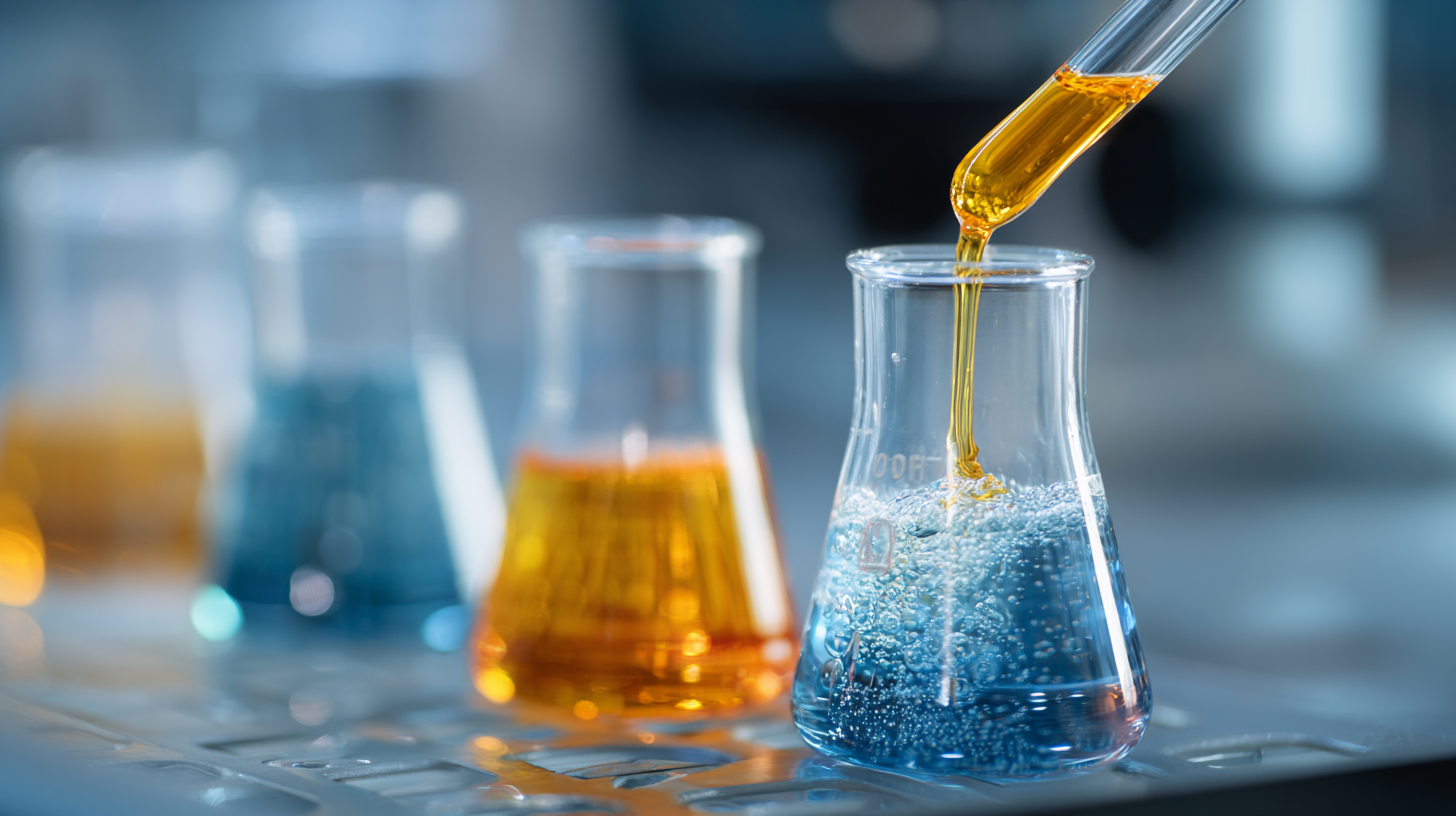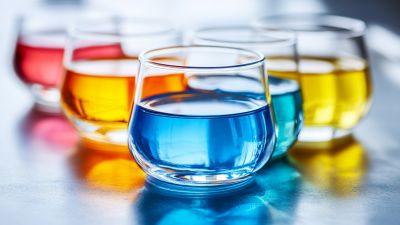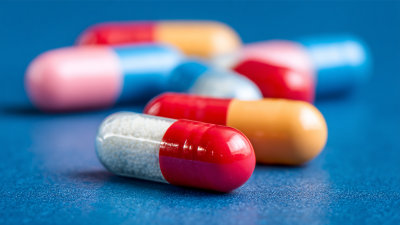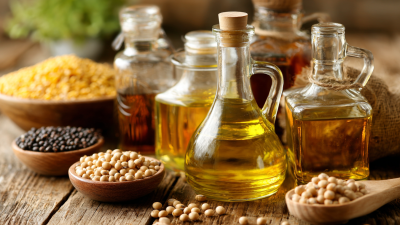
News
Exploring the 2025 Top+ Digital Trends: The Role of Propylene Glycol in the Pharmaceutical and Food Industries
As we navigate the dynamic landscape of digital trends in 2025, one pivotal element emerges within the pharmaceutical and food industries: Propylene Glycol. This compound, recognized for its versatility and safety, is projected to see a substantial increase in demand, driven by the growing focus on clean-label products and the expansion of healthcare applications. According to a recent report by Grand View Research, the global propylene glycol market is expected to reach USD 4.1 billion by 2025, growing at a compound annual growth rate (CAGR) of 4.1%. This growth trend underscores the importance of understanding the multifaceted role Propylene Glycol plays in these sectors.

Renowned industry expert Dr. Emily Hargrove emphasized the significance of Propylene Glycol in today's market by stating, "As consumers increasingly prioritize safety and transparency in the products they use, Propylene Glycol stands out as a trusted ingredient that meets these evolving expectations." With its applications ranging from pharmaceuticals as a solvent and carrier to food as a flavoring agent, Propylene Glycol is positioned to capitalize on the digital transformations within the industry. This exploration of digital trends will delve into how Propylene Glycol not only satisfies regulatory standards but also aligns with consumer preferences, reinforcing its critical role in the future of food and health.
The Importance of Propylene Glycol in Modern Pharmaceutical Formulations
Propylene glycol plays a crucial role in modern pharmaceutical formulations, serving as a versatile excipient that enhances drug delivery and efficacy. Its ability to function as a solvent, humectant, and emulsifier makes it ideal for a variety of formulations, including intravenous, oral, and topical medications. Recent studies emphasize the importance of drug vehicles in topical treatments, particularly for conditions like atopic dermatitis, where vehicles help restore the skin barrier and boost innate immune responses. This underscores propylene glycol's multifaceted contributions to improving therapeutic outcomes.
In addition to its role in pharmaceuticals, propylene glycol's properties align well with the industry's needs for optimal formulation characteristics such as stability and compatibility. Its low toxicity and favorable safety profile make it a preferred choice among formulators. As manufacturers continue to optimize formulations, particularly those with high-concentration protein-polymer solutions, the ability to manage factors like osmolality becomes increasingly important. Propylene glycol's contribution to achieving appropriate osmotic conditions within injectable formulations further cements its significance in the evolving landscape of pharmaceutical innovations.
Key Applications of Propylene Glycol in Food Safety and Preservation
Propylene glycol, a versatile compound, has gained prominence in the food industry due to its essential role in ensuring food safety and preservation. As a synthetic organic compound, it serves not only as a food additive but also as a key player in preventing spoilage. Its ability to retain moisture makes it an effective humectant, prolonging the shelf life of products like baked goods, dairy products, and salad dressings, while also enhancing their texture and mouthfeel.
In addition to its preservation capabilities, propylene glycol acts as a solvent for flavors and food colorings, allowing for a more uniform distribution in various food products. Its low toxicity profile compared to other compounds makes it preferable for use in food items, ensuring that consumers are safeguarded from potential health risks. Furthermore, as the demand for cleaner-label products increases, the role of propylene glycol in maintaining food quality without compromising safety becomes increasingly vital, as it fits well within the guidelines for food additives deemed safe by regulatory authorities. Thus, propylene glycol's multifaceted applications in food safety underline its significance in the food industry.
Exploring the 2025 Top+ Digital Trends: The Role of Propylene Glycol in the Pharmaceutical and Food Industries - Key Applications of Propylene Glycol in Food Safety and Preservation
| Application Area | Function | Industry | Safety Considerations | Regulatory Status |
|---|---|---|---|---|
| Food Preservation | Humectant | Food Industry | Generally Recognized as Safe (GRAS) | Approved by FDA |
| Flavor Enhancement | Solvent | Food Industry | Minimal Risk | Approved by FDA |
| Pharmaceutical Formulation | Stabilizer | Pharmaceutical Industry | Low toxicity | Compliant with USP |
| Personal Care Products | Moisturizer | Cosmetic Industry | Non-toxic | Authorized in EU |
| Antifreeze Agent | Freezing point depressant | automotive and industrial | Non-hazardous | Compliant with ASTM |
Regulatory Perspectives: Navigating the Use of Propylene Glycol in Industries
 Navigating the regulatory landscape surrounding propylene glycol in the pharmaceutical and food industries requires a keen understanding of safety standards and guidelines. In many regions, regulatory bodies such as the FDA in the United States have established clear criteria for the use of this versatile compound. Ensuring compliance with these regulations is crucial for manufacturers, as non-compliance can lead to product recalls and legal ramifications. Understanding the specific requirements for labeling, dosage, and purity standards is essential for successfully incorporating propylene glycol into formulations.
Navigating the regulatory landscape surrounding propylene glycol in the pharmaceutical and food industries requires a keen understanding of safety standards and guidelines. In many regions, regulatory bodies such as the FDA in the United States have established clear criteria for the use of this versatile compound. Ensuring compliance with these regulations is crucial for manufacturers, as non-compliance can lead to product recalls and legal ramifications. Understanding the specific requirements for labeling, dosage, and purity standards is essential for successfully incorporating propylene glycol into formulations.
Tips: When working with propylene glycol, always stay updated on the latest regulatory changes. Regularly consult official resources and attend industry seminars to ensure your practices align with the current safety standards.
Additionally, it is vital to conduct thorough risk assessments and undergo routine testing of products containing propylene glycol. Collaborating with regulatory consultants can also enhance your understanding of the necessary documentation and testing protocols. By proactively addressing potential compliance issues, companies can minimize risks and promote safer usage of propylene glycol in their formulations.
Tips: Consider engaging with industry associations that focus on regulatory compliance for further guidance and resources. They often provide valuable insights that can help navigate complex regulatory frameworks effectively.
Emerging Trends: Sustainability and Bio-based Alternatives to Propylene Glycol
The demand for propylene glycol (PG) in the pharmaceutical and food industries is rapidly evolving, driven by the increasing emphasis on sustainability and the shift towards bio-based alternatives. According to a market research study by Custom Market Insights, the global propylene glycol market is projected to reach USD 7.03 billion by 2034, growing at a CAGR of 4.23%. This highlights not only the growing application of propylene glycol but also the rising need for eco-friendly solutions in various sectors.
In particular, the bio-based propylene glycol market is expected to see significant growth, with projections indicating sales could reach USD 6.75 billion in the near future. This is corroborated by findings that reveal a strong shift in consumer preferences towards sustainable products. By 2035, sales of biobased propylene glycol in the USA are anticipated to hit USD 952 million, attaining a 6.0% CAGR. Such trends point to an industry increasingly focused on sourcing materials that are not only effective but also environmentally responsible, reflecting a global movement towards greener practices across all market sectors.
Market Dynamics: Forecasting Propylene Glycol Demand in the Future
The global market for propylene glycol is anticipated to experience substantial growth in the coming years, driven by increasing demand across the pharmaceutical and food industries. A recent market analysis predicts that the bio-based propylene glycol sector could reach a value of USD 7.03 billion by 2034, with a compound annual growth rate (CAGR) of 4.5%. This trend reflects a broader shift towards sustainable and eco-friendly products, as consumers and industries alike seek alternatives to traditional petrochemical-based options.

Particularly in the pharmaceutical sector, propylene glycol is valued for its role as a solvent and preservative, making it essential for various medications and health-related products. As the healthcare landscape evolves, the demand for high-quality, reliable ingredients will continue to fuel market expansion. Simultaneously, the food industry is recognizing propylene glycol's applications in food additives and flavoring agents, further solidifying its importance. The confluence of these dynamic trends indicates a robust future for propylene glycol, emphasizing its versatility and market potential.
Related Posts
-

Key Factors to Identify Reliable Manufacturers of Propylene Glycol for Global Buyers
-

Propylene Glycol Market Trends and Insights at the 138th China Import and Export Fair 2025
-

Unlocking the Health Benefits of Glutamic Acid in Nutrition and Wellness
-

The Essential Role of Ceftriaxone Sodium in Modern Antibiotic Therapy: What You Need to Know
-

How to Incorporate Soybean Oil into Your Daily Cooking for Healthier Meals
-

7 Essential Tips for Maximizing the Benefits of Phytic Acid in Your Skincare Routine





